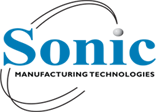
Sonic Manufacturing Moves “Supply Chains At The Speed Of Light

David Ginsberg
Vice President of Supply Chain Management, Sonic Manufacturing Technologies
At last week’s East Bay Manufacturing and Logistics Summit, the region convened to hear from industry executives and public officials about what policy, infrastructure, and talent needs face regional manufacturing/logistics. Taking center stage for the morning keynote was David Ginsberg of Fremont’s Sonic Manufacturing Technologies as he described a revolutionary new program the company has launched to automate purchasing and supply chain. As David put it, “If you compete on price alone, you’re either a commodity or a memory,” — an idea he explains in our interview below.
1. Sonic is well-known as a leader in regional manufacturing — tell us more about the company’s core capabilities.
Sonic Manufacturing Technologies is a regional “EMS” or Electronics Manufacturing Service. In short, we build other companies’ products for them. We partner with over 100 of the technology OEMs in the Silicon Valley and San Francisco Bay Area delivering rapid prototyping, New Product Introduction (NPI), manufacturability studies (for repeatability and scaling to volume), and the volume production itself. With more than 300 employees, eight surface mount lines, and 85,000 square feet of facilities, we are perhaps the largest electronics assembly facility on the West Coast.
2. You recently launched a revolutionary new service, “Supply Chains at the Speed of Light.” What was the impetus for developing this system?
The world continues to move faster, and customers have driven our obsession with speed and performance. For new products, each week to market that is lost waiting for your EMS partner is a week of less productive time for engineering, and a week of less time for competition-free products in the marketplace. For ongoing production, moving at “prototype speed” reduces the need for forecasts, increases fulfillment rates, improves customer service, and lowers inventory. So, regardless of where our customers are in the product lifecycle, speed matters. “Supply Chains at the Speed of Light” has allowed us to procure 35 percent of our components from our suppliers in less than three seconds from demand creation, resulting in over 4 million parts delivered the next day without error. This is critical for the factory to have the earliest possible manufacturing start date for the earliest possible customer delivery date.
3. Big data is having a dramatic impact on the way most industries do business — is this similarly key to continued success in local manufacturing?
Big data seems to have its best fit in customer and marketplace analytics — how the customer will respond on a web page or what products the local market or demographic will buy. Within the factory, cost matters. Each machine and process has its existing automated performance logs or process metrics. Perhaps big data will come to the factory floor eventually, but currently it hasn’t found a fit or produced a benefit greater than its cost.
4. Now that you have evolved the procurement processes to be nearly instantaneous, what’s next in manufacturing innovation?
We plan on doubling our inbound materials on the speed of light program over the coming year from 35 to 70 percent of procurement. This in itself points to two initiatives we must take. First, the data quality must be flawless to “fly by wire.” Second is what I call “the last part problem” — the customer doesn’t see delivery from the factory until the factory obtains the last part, no matter how good performance is on the rest of them. Developing state-of-the-art processes for supplier-specific sourcing solutions and time-critical problem solving will be paramount. Managing the last part problem successfully will further drive home the point that regional manufacturing delivers in under half the time and half the inventory of off-shored manufacturing, frequently at or below total-cost parity. We have seen several hundred assemblies brought back to the U.S. due to the responsiveness and economics of this approach.

This article was first published on the City of Fremont blog.
CALL FOR A QUOTE
(510) 580-8500
OR EMAIL:
Sales@Sonicmfg.com
